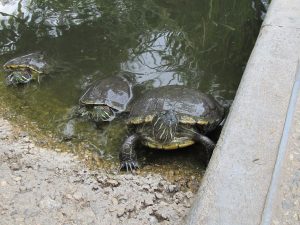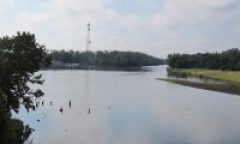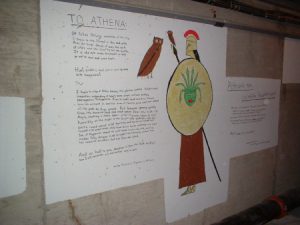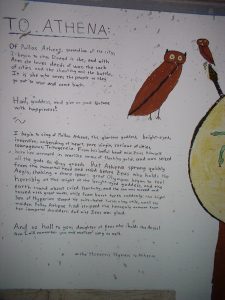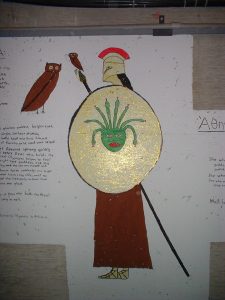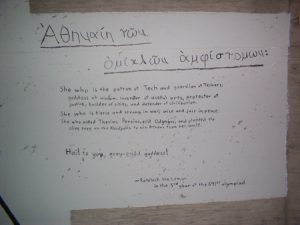The following are stories that were traditionally told on Caltech steam tunnel tours, circa 2005-2009. Roman text is a rough approximation of the stories that were told; text in italics are my additional commentary and explanations.
These stories are reproduced for the historical record, as it is my understanding that the tradition of steam tunnel tours at Caltech died out a number of years ago. The locks that used to open with South Master have been changed, and the penalties for entering the steam tunnels are much more severe than they once were.
More details can be found here.
The Page Crawl
In the tunnels under the Olive Walk, which separates the North and South Houses is an appropriate time to discuss the Page Crawl.
We have now entered what is known as the South Tunnels, the largest of the four tunnel networks on campus. It and the North Tunnels, to which it is connected, together comprise what most people mean when they talk about the Caltech tunnels. The Super-North Tunnel—connecting Avery and Moore to the Holliston steam plant—and the Super-South Tunnel—connecting a few of the buildings on the north side of California Blvd—are short and hard to get into, so few people explore them.
Speaking of places that are hard to get into, you should take note of the dead-end tunnel we just passed on the right. It’s actually not a dead-end, but the semi-legendary tunnel entrance to the North Houses, the Page Crawl. If you climb through the ceiling at the end of it, you find yourself in a two-foot-tall crawlspace in the foundation of the North Houses which, if you navigate successfully, takes you to a small door that opens into the North House basement under Page House.
This is one of the more unpleasant places in the tunnels to explore—besides being cramped, it is so dusty that you really need a dust mask to explore it, and anything you’re wearing will get horribly filthy—and one part of it is rumored to be infested with black widow spiders, so it’s probably best to avoid it. However, people do occasionally go through it so they can say they have: I think that a total of six people had been in it during my time at Tech.
Something I didn’t generally mentioned to prefrosh is that I was actually part of the first group to navigate the Page Crawl in a number of years. When I was a frosh, it was a legend that upperclassmen talked about, but no one claimed to have been in. Then, during a capture-the-flag game my sophomore year, two friends and I realized that the other team’s flag was just north of the North Houses and could easily be grabbed by someone sneaking out of the North House basement.
However, we’d have to get into the North Houses without being seen first. To achieve this, we decided to attempt the Page Crawl, without using dust masks, or realizing our clothes would be ruined. Surprisingly, we managed to get through it relatively quickly, though since it had taken close to an hour we assumed that the game must be over. We exited the North Houses from the south side to check our mail boxes (undergrad mail boxes were then located on the south end of the North Houses) and then walked around the side of the building to the north side, only to find out that the game was still going on and to provide a useful distraction while another group from our team grabbed the flag.
The Earthquake Door
In a tunnel under the geology buildings, there is a door with the following label:
Earthquake Door
This door protected by
Seismic Security Systems.
Any attempt to break
through it or look over it will
result in small-scale seismic
disturbances.–J.S.
12/7/88
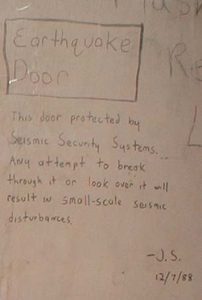
This is the Earthquake Door. As you can see, it’s on an unpickable high-security Medeco lock, like most lab doors. However, as the sign says, it has an added security feature. Any attempt to get past the door causes earthquakes.
You see, originally, all the doors on campus had ordinary locks, of the sort you might find on a house, and could be picked open fairly easily. In the early Seventies, the door to Milikan roof was put on an unpickable Sargent Keso lock, because administration had decided the roof was an attractive nuisance, and was afraid of getting sued if someone fell or jumped off it. However, a group of Moles managed to bypass the door by climbing through an air shaft, take it off its hinges, and remove it from the building. They then signed the door and disassembled the lock to see how it worked before returning both to the Security office in the early morning.
That put a damper on administration’s attempts to increase security with fancier locks for about a decade, until, in the early Eighties, a Medeco lock showed up on this door. Now, unlike the door to Milikan roof, it’s not obvious why a door in the steam tunnels under some geology buildings would need particularly high security. However, no one could figure out how to pick the lock or bypass the door. Eventually, a group of drunk students apparently got the idea that they would go into the tunnels and break through the door to find out what was on the other side. Despite the fact that this plan was a serious violation of the Honor Code—“No member of the Caltech community shall take unfair advantage of any other member of the Caltech community.”—they went through with it and spent a couple hours body-slamming the door and pounding on it in the hope of getting through. Eventually, though, they gave up and went to bed with the door still intact.
The next morning, Caltech put out a press release announcing a Richter 6.0 earthquake centered in Pasadena. However, when no one else reported any sort of earthquake at all, they quickly retracted the report and, shortly afterward, the USGS office that had formerly been in the geology buildings on campus was moved to a house on Hill Avenue.
It is perhaps worth noting—though it wasn’t generally noted during tours—that this isn’t the original door. During the summer after my freshman year at Tech, renovations were done in the tunnels that included tearing down the wall containing the Earthquake Door, rebuilding it, and installing a new door there. While the photo at the start of this post is of the original note, the note currently on the wall next to the door is a restoration. At the time of the renovation, what was behind the door was a room filled with drawers of rock samples, with another locked door on the other side that presumably led into the basement of a geology building.
Dabney Eats It, but Fleming Eats It Faster
While walking between interesting locations in the tunnels, one doesn’t want the prefrosh to get bored. To keep them interested, they’re usually told the origins of some of the more common bits of tunnel graffiti: “DEI”, “FEIF”, and “γδβγ”:
Caltech has had a lot of bad board food over the years. As much as it sucks, Caltech Dining Services have improved a good deal since I was a frosh. And back then, upperclassmen told us that the food was much better than a few years earlier, when the board plan was contracted out to Burgers Continental, an inedibly greasy restaurant on Lake with ties to the Armenian mob. But nothing in recent memory compares to the bad board food of the 1940’s. Most of it was just about inedible, and the worst dish of all was something called Noodles with Stuff.
Noodles with Stuff was so horrible that the student dining reps from the four Houses that existed at the time called a meeting with administration to see if they could at least get this one dish removed from the menu. They tried to explain that no one would eat the stuff. However, the Dabney House dining rep was, in fact, the one student on campus who actually liked Noodles with Stuff, and when it was his turn, he simply noted that “Dabney eats it.” Even then, Fleming House had a tradition of competitiveness and a rivalry with Dabney, and the Fleming rep responded without thinking that “Fleming eats it faster!”
When news of this meeting spread to the student body in general, people began to taunt Darbs with the phrase “Dabney Eats It”, to which they replied with “Fleming Eats It Faster”. Besides being used as graffiti in the steam tunnels, the DEI and FEIF mottos became commonly used by Techers as tags to mark projects they’d worked on. A number of movies and video games have DEI just visible somewhere in the background of a scene, and a number of computer chips have it etched somewhere on them. DEI is even known to have been inscribed somewhere on Voyager 2. Since Harrison Schmidt, the only Caltech alum to walk on the moon, was a Darb who graduated in 1957, it is unlikely that DEI is written anywhere on the moon. FEIF may be, though.
At some point in the 1970’s, “Dabney Eats It” went from being a taunt used against Dabney to being the House’s unofficial motto, and DEI and FEIF came to be Dabney’s and Fleming’s tunnel tags.
Blacker House’s tag, γδβγ, also dates back to the 1970’s. At the time, a number of Blacker members had taken up riding on the tops of elevators. On one occasion, Security caught a bunch of Moles (members of Blacker) in Millikan after it was closed for the night, only to have them run around a corner and vanish into the elevator. The Security guard had the elevator stopped and expected to find the students inside. However, they’d managed to quickly climb through the door in the elevator ceiling onto the roof and were nowhere to be found, leaving a confused Security guard to curse that “God Damn Blacker Gang”.
Millikan Memorial
The tallest building on Caltech’s campus by a factor of two is Millikan, a nine-story tower located in a garden surrounded by the three-story Mission-style buildings that make up the oldest part of the campus. At the time I was an undergrad, it was the main science library, but it has seens been converted into offices for administrators who wanted nicer views.
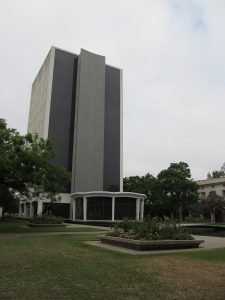
We’re now walking underneath Millikan, the tallest building on campus. Or, more correctly, the tallest memorial on campus, because, according to Pasadena zoning laws, it’s too tall to be a building.
Normally, when rich people donate money for a building on campus, their main interest is to have it named after then, and perhaps that it be used by a particular department. However, in the late Fifties, when the Mudd family donated the money to build Millikan, they had a different pair of requests: that it be named after Robert Millikan, Caltech’s long-serving (unofficial) president, who had just died, and that it be built according to blueprints that they’d had drawn up.
The blueprints described a nine-story tower that would loom high above everything else on campus or the surrounding neighborhood. Such a building seemed a bit awkward, and was not convenient for use as lab space. The last time a donor had tried to encumber their donation of a building with architectural plans—the Blacker family’s demand for a bell tower in Blacker House—the Institute had gotten out of it by pointing out that the plans provided were completely structurally unsound. This time, though, the plans provided for the Millikan building had been professionally produced and were suitable even for an earthquake zone like Pasadena. However, Caltech was short on library space at the time, so the Caltech Libraries were glad to accept the building, even though the general opinion was that it wasn’t very well adapted for use as a library.
A bigger problem was that the proposed building was twice the maximum height allowed by Pasadena’s zoning rules, and the zoning board refused to give Caltech an exemption. Fortunately, someone noticed that there was a loophole in the zoning rules exempting “memorials” from the height restrictions, without any clear definition of what constituted a “memorial”. Caltech managed to claim that the building was the “Robert Andrews Millikan Memorial”, and just happened to have a library inside it. Pasadena promptly changed the zoning rules to close the loophole, but Millikan was grandfathered in, and Caltech and Pasadena have had rather poor relations ever since.
The Shrine to Athena in the Painted-Over District
One hacking-related tradition that was fairly strong at Caltech but seems nearly non-existent at MIT is the tunnel mural. While MIT’s Hacker Ethics are fairly strict in limiting writing on the walls in hacking locations, Caltech tunnelers never felt any compunction about doing so. Since Caltech tolerated students fairly well in the steam tunnels in my day, people occasionally brought paint into them to make art. Sometimes fairly good art. Administration didn’t seem to care, and generally left the art in place. Except for one time when they didn’t.
As we turn a corner, we find a large expanse of wall painted white with a mural of Athena—complete with a shining golden shield—along with writing in English and Greek.
There is one small section of the tunnels in which the geology department has some storage cages. They access this space, I gather, through the Earthquake Door, but there are signs on each end indicating that they shouldn’t go further. At some point near the end of my freshman year, a geologist noticed that the word “fuck” was written on the wall in the tunnels and decided that this was offensive. They complained to facilities, who got white paint and painted over every bit of text and art in the geology section of the tunnels, and a bit further. This painted-over district included some fairly well-liked and important things, such as the Earthquake Door notice, the “Three Rings for the Money Kings” poem, and a Dr. Seuss-inspired mural called “Beware the Slippard,” which was previously located right here.
A number of students became upset enough to try to arrange for a student tunnel committee for administration to talk to before doing things like this again, though I don’t think much came of it. One person I knew planned a big mural of a huge asteroid hitting earth and shattering it to be put on the Earthquake Door, but no work was ever done on it. The Earthquake Door note and Money Kings poem were restored and I restored the “if i were a picture-painter” poem. I also put up the first new mural in the area that summer: this large shrine to Athena of the Steam Tunnels as the patron of Caltech.
While I was a student, I led processions (well, most of the time it was just me) at the start of each term and each finals week to bring Athena olive branches from the trees on campus. And when I graduated, I left the olive walking stick I’d used for hiking there at the shrine, since there was no real way I could take it to grad school with me.
I was quite amused when I found that a report on the steam tunnels written by a student who came to Caltech one year later than me reported the Athena mural as somehow having survived being painted over, rather than realizing that it was a very recent addition to the tunnels.
Three Bombs for the Money Kings, Under the Sky
As I mentioned before, unlike MIT’s Hacker Ethics, Caltech’s tunneling traditions didn’t have any rules about writing on the walls of the steam tunnels. Occasionally, people made elaborate murals, but most of the writing on the walls consisted of random jokes or comments a line or two long, most of them not worthy of notice. One particular poem, located under Milikan Library, though, always got a mention on tunnel tours:
Three bombs for the Money kings, under the sky,
Seven for the Narc lords, in their halls of stone,
None for mortal men, doomed to die,
And One for the Dark Lord, on his dark throne,In the land of Nixon, where the shadows lie:
One Nuke to rule them all, One Nuke to find them,
One Nuke to bring them all, and in the darkness blind them,
In the land of Nixon, where the shadows lie.
This poem is fairly unusual, as political graffiti is almost never seen in the steam tunnels: for the most part, Caltech students have a history of being remarkably uninterested in real-world politics. It is notable enough that, when it was painted over by overzealous maintenance workers the summer after my freshman year at Caltech, students from Blacker House nearly immediately restored it.
Nearby is another original poem, which my friend “Fish” originally pointed out to me. It wasn’t generally included in tunnel tours, but I liked to point it out, because I think it’s quite good and quite appropriate to Caltech. It was painted over at the same time as the “Three Bombs for the Money Kings” poem, and I restored it shortly afterward. In the Tunnels, it is written without a title, but for a while it was posted on the website of the 1990’s Lloyd alum who wrote it, and he titled it “i want to sleep” there.
if i were a picture painter, there’s a picture i would paint
(too bad a picture painter is a person that i ain’t)
i’d take my tears and mix them well and put them on the page
instead of long and lonely nights of jealousy and rageif i were a story writer, there’s a story i would write
about a four year toothpick tower being toppled in one night
and how a week of worrying didn’t make it strong
(but i’m not a story writer so my writing would be wrong)if i were a real lover, there’s a girl that i would love
our love would live forever, she would never have enough
her infinity plus one would never dwindle down to nothing
(i guess i’m not a lover and i’m better off not loving)if i were a picture painter, there’s a picture i would share
i’d fill you full of pity and draw you to my lair
i wouldn’t let you leave me, i’d hold you close and tight
until another toothpick tower collapses in the night.
Tales from Gates 22
A door on South Master leads to a hallway filled with abandoned furniture and an open door that leads into the bottom of a large lecture hall. Once we turn on the lights, it turns out to be Gates 22, the second-largest lecture hall on campus. This is the lecture hall that one traditionally tells Security that one is looking for if caught in the tunnels.
When we started this tour, we told you that if Caltech Security ever found you in the steam tunnels, you should tell them you were looking for Gates 22. Besides being the traditional place that people tunnel to try to find, Gates 22 has a long history of RFs—the formal term for pranks—because it is large and has been home to many Core classes. Now is a good time to rest and tell some stories of some of the pranks that have happened here.
If you look at the clock on the back wall of the lecture hall, you’ll see that it has a hamster’s face. This is the remains of a prank the origins of which go back to before any of you frosh were born.
Starting in the Sixties, or perhaps even to the Fifties, Caltech had a yearly campus-wide party called “Interhouse”. Each of the four, and then each of the seven, Houses on campus held a party with lots of construction—Page always built a working roller coaster, for example—in their courtyards on the same night. These parties were huge, and had always attracted a number of people from off-campus. Originally, in the days before Tech admitted women, female students from PCC or Oxy were commonly invited en masse, but, by the Eighties, Interhouse was mainly attracting Pasadena high school students. The party had continued to get bigger, though, and by the mid-Eighties it was topping Playboy’s list of great college parties. Unfortunately, huge parties attracting the general public turned out to attract unsavory behavior as well.
At an Interhouse in the late Eighties, a Caltech staff member was clubbed by an outsider with a baseball bat. The next year, one outsider stabbed another. In light of these two incidents, Administration decided that the 1989 Interhouse would be Caltech students and invitees only, and six-foot-tall chain-link fencing was put up across the Olive Walk between the North and South Houses to keep ousiders out. Even this turned out to not be enough, as people broke windows in the Houses to get into the party, and riot police were nearly called in.
After the disaster of the 1989 Interhouse, Administration decided to ban more than two Houses having parties in their courtyards at the same time. However, Interhouse was a big enough tradition that the student body wasn’t entirely willing to let it die. After one failed attempt by several Houses to organize an illegal Interhouse, it was replaced by a number of one-house parties over the course of the year: Dabney’s Drop Day, Ruddock’s OPI, and Blacker, Lloyd, Fleming, Page, and, later, Avery’s “Interhouse” parties. (Apache, though sometimes called “Ricketts Interhouse”, is actually not part of this tradition: it dates back to before the all-house Interhouse parties started and existed alongside them.)
Part of the reason that Interhouse had traditionally featured such impressive construction was that it had been during first term, when frosh were on pass-fail and had lots of enthusiasm for building projects. The one-house Interhouses were spread out over the year, though, and houses that had theirs in the winter or spring now didn’t have construction projects in the fall. In Blacker, this led to a tradition called Frosh Project, in which the seniors in the House challenged the frosh to do a specific prank, like turning Beckman Auditorium into a carousel, complete with motorized horses that moved up and down on the pillars that surround the building.
Several of these Frosh Projects have involved pranks in Gates 22. One year, in the late Nineties, a crashed flying saucer was constructed in Millikan pond, and a group of frosh with blue faces and silver hair staged an abduction of Professor Nate Lewis at the end of his Chem 1a lecture. Another year, the Blacker frosh turned Gates 22 into a giant hamster cage. They put wood chips down all over the floor in front, installed a giant water bottle on one side wall and a giant hamster wheel on the other, and dressed up the clock as a hamster’s face.
The tradition of pranking Gates 22 goes back a lot longer than that, though. Back in the Seventies, some students who stayed on campus over winter break decided to collect all the Christmas trees that people in Pasadena had put out by the curbside to be picked up with the garbage. They then brought them to Gates 22 on the night before the first lecture of term and set one tree in each seat, so when the first class filed in that morning, there was nowhere to sit, and class had to be cancelled while the trees were removed.
The Cow
After climbing down a ladder from the tunnels into a basement-like room, we see a large mural covering one wall: a black background with “LOVE” written in stylized and illuminated yellow letters taller than we are, and topped with the phrase “i am the COW”.
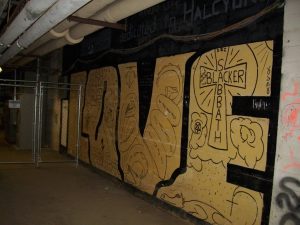
Welcome to Hell. As well as being the name of one of the two highest alleys (halls) in an undergrad dorm at Caltech, it is the name of the lowest location in the steam tunnels. The alley Hell in Blacker House got its name because, before air conditioning was installed in the South Houses my sophomore year, it got horribly hot during the summer. As for this Hell, the name should be self-explanatory.
The large mural to your right is Love, the first of four murals by The Cow that we’ll see tonight. The Cow—besides being responsible for the four most famous murals in the steam tunnels—was the only person to have ever been a member of all the Houses at Caltech at the same time.
The Cow was a student in the early Nineties who originally Rotated into Page. When he decided to join another House, he dropped his Page membership, as Page is the one house that doesn’t allow dual memberships. He then proceded to join the five other Houses—Avery didn’t yet exist—and, the night before graduation, persuaded Page to make an exception to their rules and readmit him so that he could graduate as a member of all seven Houses.
In his spare time between joining Houses, though, he painted Love and three other murals in the same style: Faith, Hope, and Fear. They’re the largest and most prominent murals in the tunnels and, appropriately given the artist, they contain symbols of all seven Houses he was a member of: for example, “dei” for Dabney, a cross for Blacker, and pentagrams for Ricketts.
Rachel Niemer for Everything
Along the wall in a sharply sloped part of the tunnels, the following is written on the wall:
Rachel Niemer for President!
Rachel Niemer for Vice-President!
Rachel Neimer for Treasurer!
Rachel Niemer for Secretary!
Rachel Niemer for Everything!
This passage makes little sense on its own, but comes with a curious bit of context. If you look closely in the parking spaces in the parking garage on Holliston, you’ll find that every single space is marked in fading black paint “Rachel Niemer”. By my time at Tech, the memory of how this originated had largely been lost, other than that Rachel Niemer was apparently a Ruddock RA. Three years ago, I decided to look her up and contact her about it, and I got the following explanation:
I’m amazed to hear that a recent alum has seen evidence of the prank, but then again, even though the paint they used was water soluble, it doesn’t rain in the parking decks 🙂
Anyways, in the week after rotation, in Ruddock, the frosh are tasked with trying to identify a particular sophomore in the house (and I apologize if you know the details of Ruddock’s process for welcoming frosh). In order to get clues to who the mystery sophomore is, they are given a menu of tasks to do – the more of them they do, the more clues they get. One of those tasks is to paint the RA’s parking spot with the Ruddock crest and the RA’s name. The frosh that year, for whatever reason, decided not to paint my parking spot, and I was jokingly giving some of them a guilt trip about it. So, they promised to make it up to me – famous last words 🙂 They made some stencils with my name, got permission from security and the Dean’s office, and painted nearly every parking spot on campus with my name on it.
The reaction was thoroughly amusing – I got emails from faculty all over campus jokingly telling me that they could no longer park in their parking spot because it was now reserved for Rachel Niemer. In the middle of the street on Holliston (outside the Director of Res Life’s office) they painted “All your spots belong to Rachel Niemer.”
In the Foundations of Throop Hall
In the South Tunnels we enter a north-south running segment with unusually high ceilings and brick walls, unlike the concrete walls we’ve seen elsewhere.
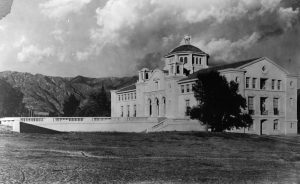
We’re now walking through the foundation of Throop Hall, the original building built when Caltech moved to this campus in 1910. Throop was one of three buildings closed after the 1971 San Fernando earthquake, the earthquake that made Caltech lose its earthquake insurance and created the abomination known as Chem 3a [freshman chemistry lab].
You see, at some point in the 1950s, as earthquake insurance was starting to get more expensive in Los Angeles, the geology and civil engineering departments decided to determine which buildings were likely to be damaged in an earthquake, so that the Institute could then insure only those buildings against earthquake damage. So, when the 1971 earthquake hit, the only buildings at Caltech with earthquake insurance were Throop Hall, then the administration building, Gates Laboratory of Chemistry, and Culbertson Hall, the old auditorium.
Apparently the geologists and civil engineers had done their job well, because these three buildings were the only ones damaged badly enough in the earthquake that they had to be closed. Throop and Culbertson Hall were demolished, and Gates Lab was empty for a decade until a donor was found to fund its renovation as Parsons-Gates, the current main administration building. And, after this feat of prediction, no insurance company was willing to insure any Caltech-owned building for earthquake damage unless the whole campus was insured. The Institute decided to decline to insure anything, since they’d already lost the three buildings they’d predicted to be risks.
With Gates—which had housed the undergrad chem labs—closed, it was necessary to rapidly build a new undergraduate chem lab. Mead was built in about a year and, because of the rush, was much smaller than the undergrad labs it was replacing. This forced all of the upper-level chemistry labs to be crammed into one room with twenty fume hoods, making the scheduling of chemistry labs annoyingly cramped.
There was also only one room available for freshman chemistry labs, which meant that it was impossible to retain the lab component of the then year-long Chem 1, with all freshmen doing labs as they learned about the relevant material in class. Instead, a one-term class, Chem 3a, was created to get students through a year’s worth of labs in a single term. Since students were expected to take Chem 3a as freshmen, this meant that most frosh would be taking it before they’d learned all of the relevant material in Chem 1.
It’s also worth mentioning that the demolition of Throop turned out to be unnecessary. The original blueprints had been lost, and the decision to tear it down was made based on the assumption that it had only been built to the building codes in force when it was built. However, it was one of the first reinforced concrete buildings ever built and, during demolition, it was discovered that, due to uncertainty about the strength of such buildings, an order of magnitude more re-bar had been used than was required, and the building was much more stable than had originally been thought. But, by the time this was discovered, too much had been demolished to make it worth saving, and the building was replaced with a pond full of turtles.
